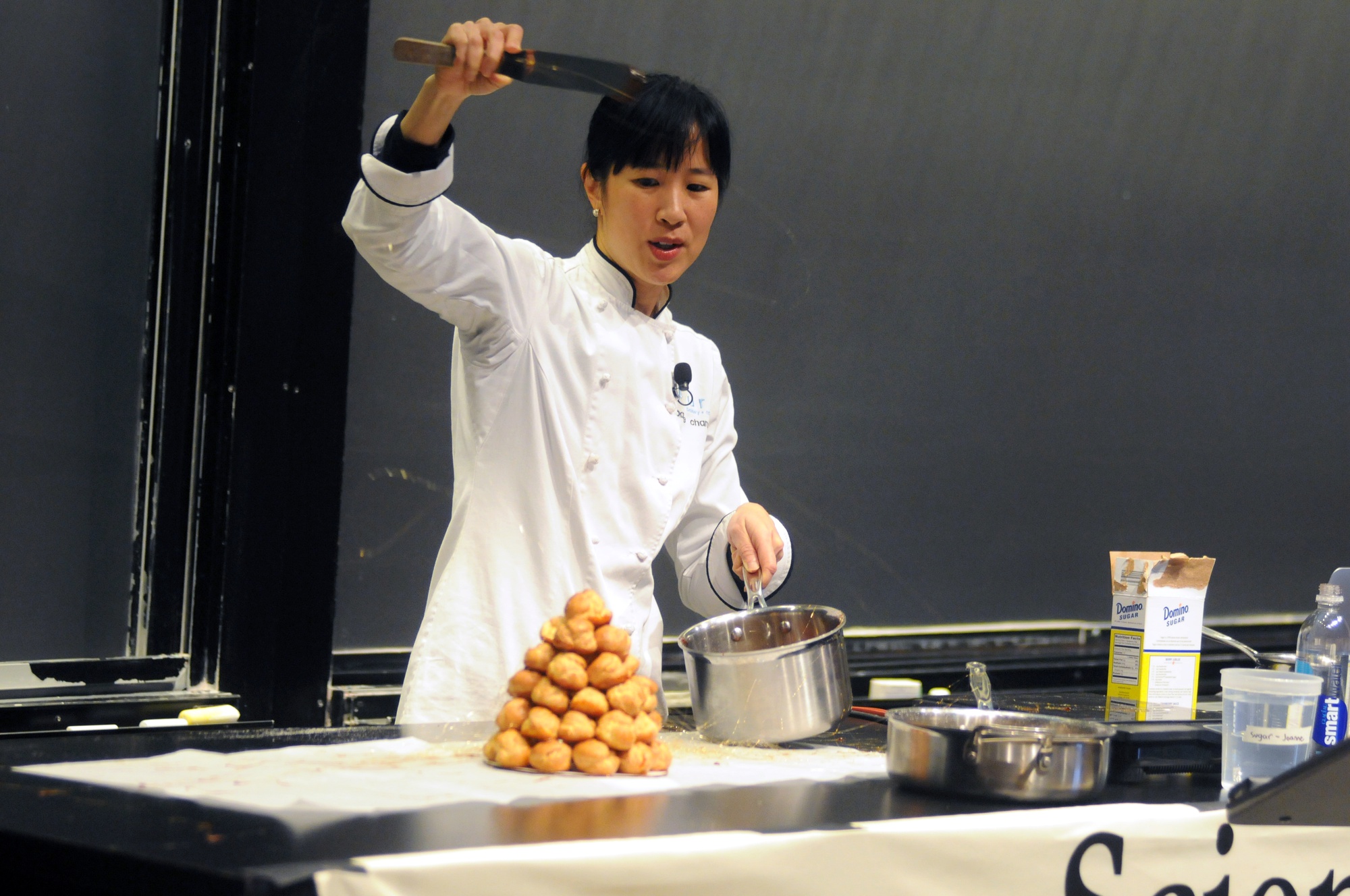
News
Summers Will Not Finish Semester of Teaching as Harvard Investigates Epstein Ties

News
Harvard College Students Report Favoring Divestment from Israel in HUA Survey

News
‘He Should Resign’: Harvard Undergrads Take Hard Line Against Summers Over Epstein Scandal

News
Harvard To Launch New Investigation Into Epstein’s Ties to Summers, Other University Affiliates

News
Harvard Students To Vote on Divestment From Israel in Inaugural HUA Election Survey
Baker Joanne Chang Talks Sweets and Science

Joanne B. Chang ’91, the founder of Flour Bakery, lectured on the science of sweets to an overflowing hall in the Science Center Monday night.
Chang taught the audience members how to make bread, pie crust, cream puffs, and cake, while providing commentary on the chemical interactions that make these pastries delicious as part of the Science and Cooking lecture series.
Chang also used the time to field audience questions—for instance, she answered a question about the process by which bread rises, explaining the chemistry behind yeast and fermentation.
“These are living, one-celled organisms” said Chang. “They start eating all of this food when warmed…and then they start to expel gas,” causing bread to rise. Chang told audience members to think about and understand these interactions to improve their pastries.
Chang, who is well known for her appearance on the television show “Throwdown with Bobby Flay,” laughed about how she was tricked into thinking she was filming a new show for the Food Network called “The Science of Sweets” which played on her background as a former applied mathematics and economics concentrator at Harvard.
“She was definitely able to teach a lot about the science of the baking itself, but then also provided a lot of ideas…of how to make something delicious,” said Carlyn R. Mann, who works as a research analyst at the Harvard School of Public Health.
“I love coming to these when I get a chance,” said Helen C. Clark ’15, who said she hopes next year to take Science of the Physical Universe 27: “Science and Cooking” the class behind the lecture series.
Because of the lecture series’ popularity, many would-be attendees missed out on the event—at least 50 people were turned away at the door after the lecture hall reached capacity.
“Over the course of the semester, I have had to turn people away on more nights than I haven’t,” said Joseph J. McDermott, a postdoctoral fellow in applied physics at Harvard who was managing the line. “It varies week to week. Last week, we had the Red Sox game and it was sort of an off-day.”
Many attendees at the back of the line said they were surprised that they were turned away.
“There’s no overflow room!?” one attendee shouted in disbelief.
Christina M. Andujar, the School of Engineering and Applied Sciences administrator responsible for producing the lecture series, explained that SEAS could not afford an overflow room this year due to budgetary constraints. According to Andujar, the lecture series had sponsors in previous years to provide extra funding, but professors and SEAS administrators decided not to recruit any this season.
Andujar touted the fact that the event was open to the public rather than just Harvard students.
“I think it’s Harvard’s responsibility to reach out to the surrounding communities,” said Andujar. “We have huge property here. It is our responsibility to integrate and get the public into Harvard [so it can] see what we’re doing.”
Want to keep up with breaking news? Subscribe to our email newsletter.
